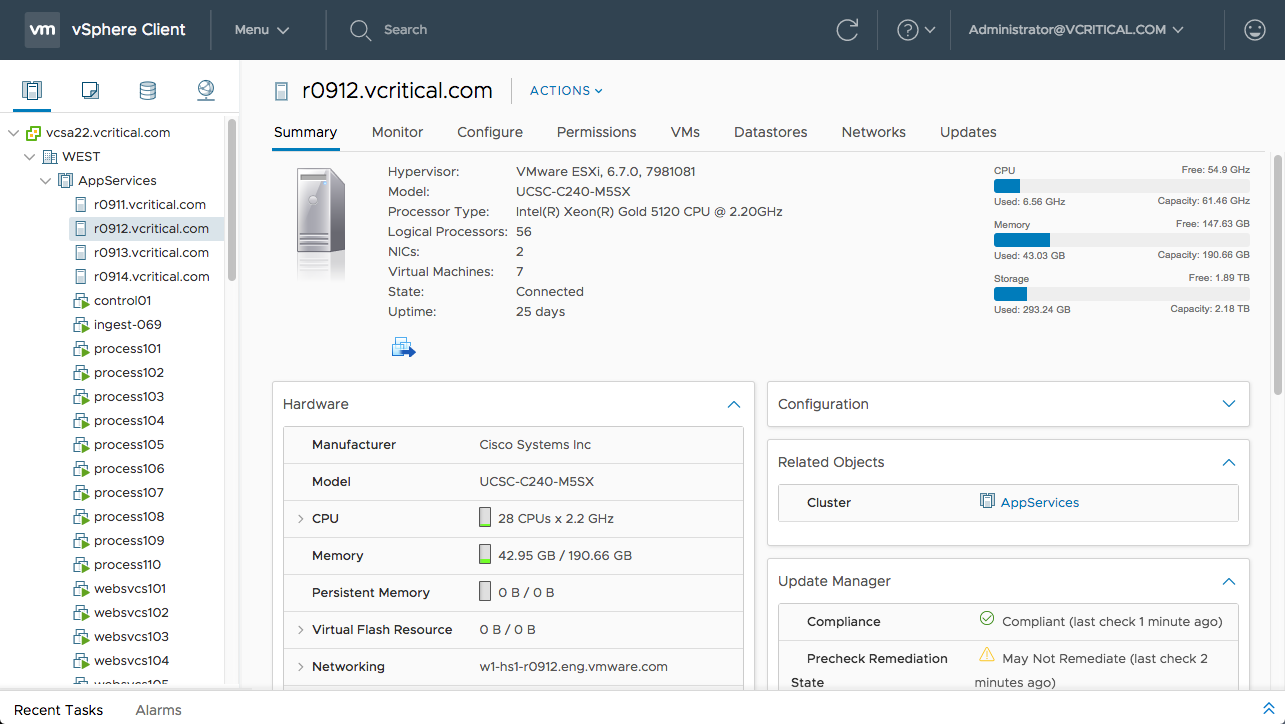VMware this week extended its campaign to automate IT environments based on its hypervisors by adding a link capability that enables the VMware vCenter platform to manage instances of VMware vSphere running on-premises and in public clouds such as Amazon Web Services (AWS) and IBM Cloud from the same console.
Mike Adams, senior director of cloud platform product marketing for VMware, said the linking capability added to VMware vSphere will enable DevOps teams to deploy the VMware hypervisor anywhere without having to invest in a separate management framework for each environment.
 At the same time, VMware is also updating VMware vSAN storage software that, among other capabilities, adds a self-healing feature designed to minimize disruptions in the event of underlying hardware failure.
At the same time, VMware is also updating VMware vSAN storage software that, among other capabilities, adds a self-healing feature designed to minimize disruptions in the event of underlying hardware failure.
Version 6.7 of VMware vSphere and VMware vSAN also now support enhanced client software based on an HTML5 interface that can manage VMware NSX network virtualization software, vSAN and vSphere along with additional third-party products.
Other new features in VMware vSphere include ESXi Single Reboot, which reduces patch and upgrade times by halving the number of reboots required to one, and vSphere Quick Boot, which will skip hardware initialization steps to gain further re-start efficiencies.
VMware is also adding support for persistent memory to speed vSphere performance and adding support for graphics processor units (GPUs).
There’s also now support for both Trusted Platform Module (TPM) 2.0 Support and Virtual TPM 2.0, which serves to protect virtual machines and hosts from being tampered or compromised by the loading of unauthorized components or allowing a guest operating system running on the hypervisor to circumvent existing security controls.
Finally, VMware is making available an instance of VMware vCenter management software running on a dedicated appliance.
Adams said VMware today has 500,000 customers running VMware vSphere, compared to 10,000 that have elected to also run VMware vSAN storage software. The goal for the company is to enable more IT organizations to embrace hyperconverged infrastructure by moving storage software on to the same server where VMware vSphere runs. That approach dramatically reduces the total cost of operations for most organizations, he said.
As VMware makes an arguably belated push into the public cloud, the unit of Dell Technologies is counting on a massive installed base of on-premises customers to move and expand their existing investments in VMware vSphere on public clouds. While there’s no doubt that approach will appeal to significant part of the VMware installed base, many customers have already invested in the hypervisor platforms used by AWS, IBM and Microsoft.
When it comes to lifting and shifting an existing legacy applications into the public cloud, VMware clearly has the inside track. But when it comes to development of greenfield cloud-native applications, VMware vSphere is not often the first choice of application developers, many of which view VMware vSphere as part of an inflexible on-premises legacy IT environment that they deliberately left behind.
To its credit, however, VMware is making significant strides in embracing advanced automation technologies that one day soon might put those developer concerns to rest once and for all.




